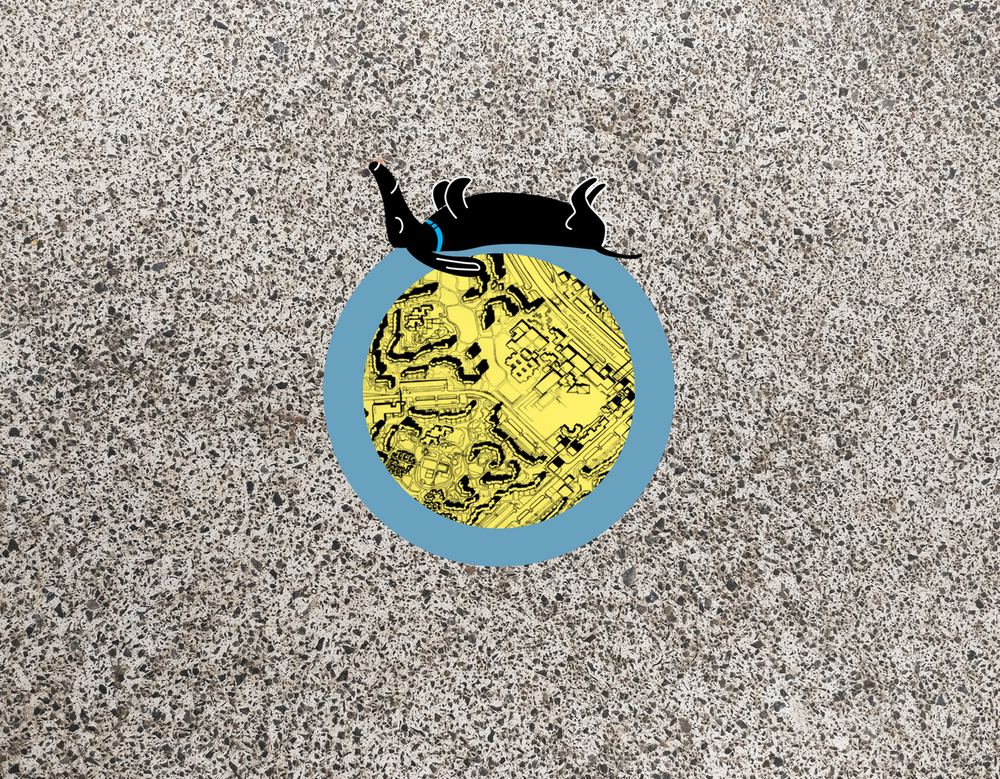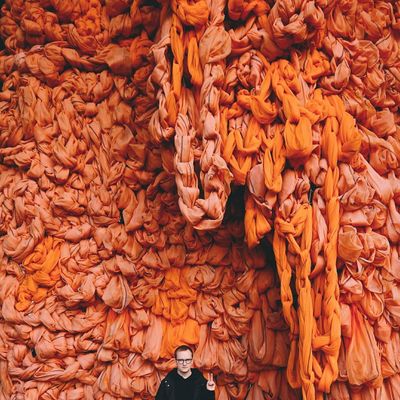
#EmotionalCityData

Research
BLOKOBRANIE
/
BLOCK-PICKING
- idea, research and graphics: Maciej Swiderski (Amsterdam, NL/Warsaw, PL)
- supervision and academic support: Niels van Manen (Amsterdam, NL)
- graphics: Marcin Gruchociak (Poznan, PL)
Blokobranie (a playful combination of words "blok" - large building, and "grzybobranie" - mushroom-picking) revolves around the question of how gamification can be used in enhancing public participation in planning processes in areas important from the heritage perspective. The project focuses on contested spaces of modernist housing estates in Europe and follows methodology related to heritage and landscape studies. This approach gives it a unique take on urban planning processes in which more emotional, visceral data is oftentimes skipped in favor of more tangible and easily analyzable facts. Looking at the memories people attach to their surroundings opens up new and exciting types of information, whereas the sheer process of collecting such data (especially in a gamified way) has a big potential in generating local pride and increased sense of collectiveness. These, in turn, can help bridge the information gap between the locals and the experts. In this respect, blokobranie can be seen as serving both the local communities and the experts who will have a chance at extracting local knowledge by simultaneously strengthening the sense of belonging among the locals.
Divided into three stages, blokobranie investigates how to:
- collect emotionally charged data
- use obtained datasets to design a gamified experience
- integrate this approach within planning processes
The first stage corresponds to a map-based questionnaire which was opened to the residents of Warsaw's Ursynów neighborhood in late May under two forms - digital (online) and analogue. The questionnaire's main objective was to give the locals a chance to share their memories in a friendly, even playful environment. The questions looked at the places which are important for the community in general, spots within the neighborhood which have positive (or negative) connotations for each respondent, and areas which they would like to see preserved or changed. By mid-July we managed to collect over 1000 responses. The next part of this stage will consist of a series of meetings designed for the local seniors, during which they will be able to freely discuss their memories over a large map in an atmosphere of conviviality in local libraries and cafes.
The second stage will consist of a game based on the results from the questionnaire. In the exploration mode, the participants, equipped with a map and several clues, will need to scan QR codes scattered around the district. Under each code, there will be a story relating to some of the memories from the questionnaire. The participant will need to "help" the imaginary neighbor solve their issues by answering several simple questions. Each successfully solved problem will be rewarded with a point which the player can subsequently use in the participation mode. This mode will aim at upgrading the areas identified as unpleasant or having bad connotations by those who responded to the questionnaire.
The final stage will be based on comprehensive workshops during which the experts (planners, architects, local officials) will meet with the residents and discuss the ways in which a memory-based exploration of their neighborhood can help elevate participatory planning to a next level. These meetings will, hopefully, result in establishing new patterns of any processes involving major changes to the urban (and emotional) fabric.
The topic is of major importance for two main reasons. First, high-rise modernist housing estates are usually subject to discursive exclusion, being labeled as places where no one wants to live. This approach, so common in the Western world, leads to high levels of social marginalization of these areas and their inhabitants, often with immigrant background. The situation is more complex in the post-socialist cities of Eastern Europe, in which this type of architecture forms the backbone of the housing market, while still often regarded as the communist legacy which is nothing more than an eyesore.
Second reason is much more technical – the majority of these structures were envisioned to last for approximately 50 years. Their “expiration date” coming to an end, it is high time to open a discussion on their future and propose new ways of (re)developing these buildings, while preserving the intangible heritage of the communities inhabiting them.
Concentrating on such mundane and highly repetitive landscapes as testing grounds for a memory-based emotional approach to planning processes makes the entire research valuable for at least two reasons. First, it contributes to changing the narratives on modernist architecture. But more importantly, if successful in such a challenging context, the method can be replicated in other types of landscapes globally.
Being able to discuss this project and the ideas behind it in Asia could be one of the starting points in assessing the universality of such memory-based urban tactics.
Despite the project's general cheerfulness and amicability, there are several challenging points that need to be addressed at all the 3 stages of blokobranie. These include:
- map literacy necessary to operate the questionnaire
- usage of digital tools (smartphones and QR codes)
- difficult memories, especially in Western Europe where late modernist housing estates are inhabited by residents stigmatized by the mainstream society
The project is just at the beginning of its course in Warsaw, PL, but the working plan for the next two years includes:
- conducting comparative studies in Amsterdam, NL and Grenoble, FR
- creating a framework of uses for other contexts, such as East Asian or North American cities

